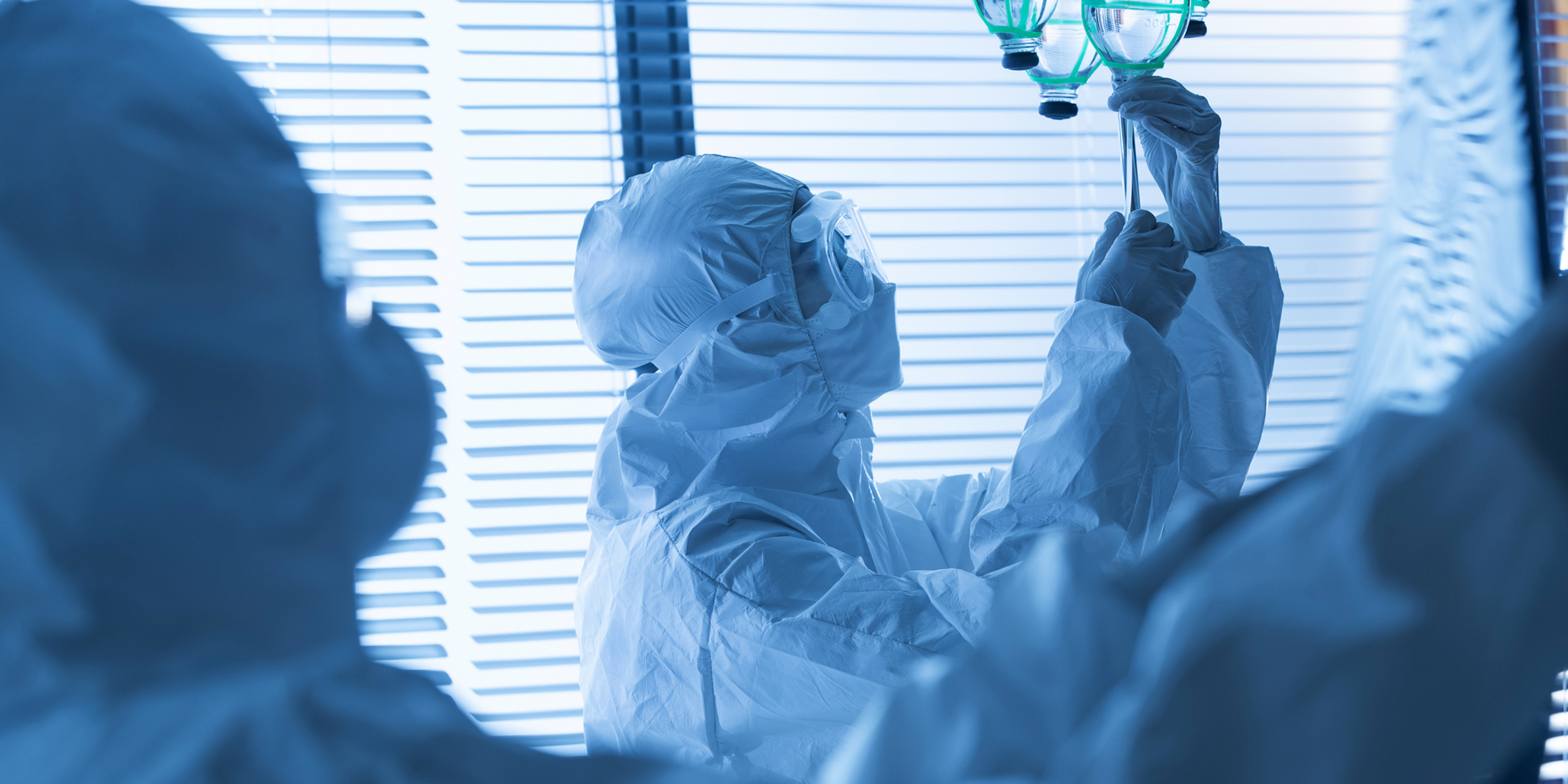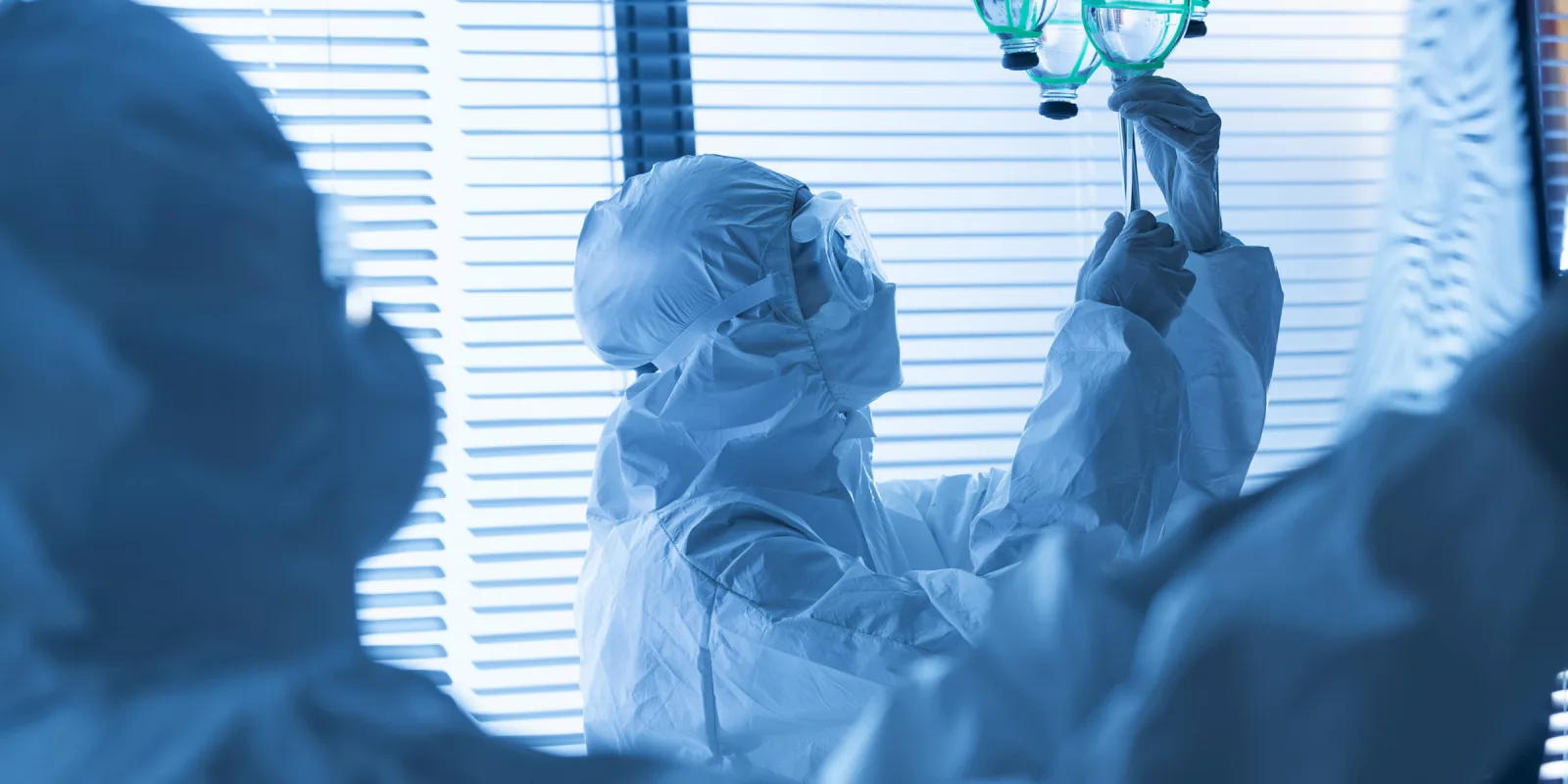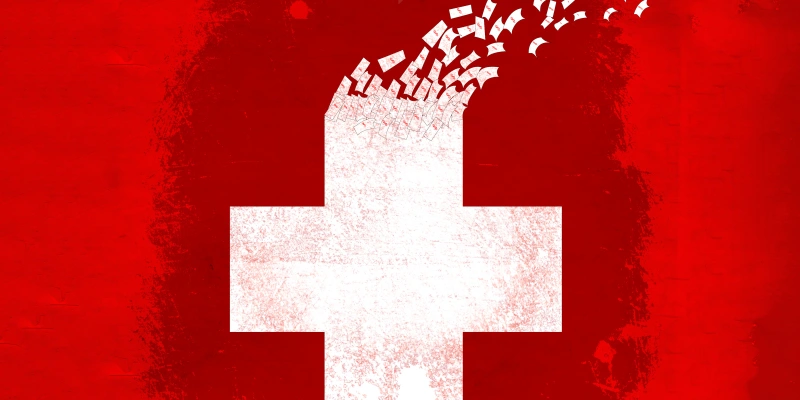
My last 24 hours in the COVID ICU were the most remarkable of my medical training. As my night shift was coming to an end, I presented my new patient from overnight, who was a COVID rule out with stage IV breast cancer, admitted from a nursing home for shortness of breath, severe electrolyte derangements, acute renal failure, and altered mental status. While presenting my patient, a nurse rushed into the room, alarming us that the patient went into bradycardia, and arrested while receiving a central line from our vascular access team. We confirmed the patient to be DNR, stopped our initial CPR attempt while giving atropine that unfortunately, did not help. I broke the news of her death to her son, completed her death paperwork, and walked home with a heavy heart.
Ten hours later I was back for my last scheduled night shift. The day team had heard of a COVID rule out patient coming from an outside hospital with suspected thrombotic thrombocytopenic purpura (TTP) and needing urgent plasma exchange. I spoke to the vascular access team about the need for a dialysis catheter for plasma exchange as well as the routine central venous catheter and arterial line that we obtain for our COVID admissions. The problem was that her platelets were 13 and therefore cannot get platelets transfused for the procedure because of her TTP. She needs the dialysis catheter to get a life-saving plasma exchange, but it would be a high-risk procedure and she could die from bleeding that we may not be able to stop. After a risk-benefit discussion, the patient consented, and a femoral dialysis line was placed, as well as a left internal jugular central line and an arterial line as per our COVID admission protocols.
Minutes after the procedures, the arterial line started indicating severe hypotension. She was working to breathe and became hypoxic. We wondered: what went wrong? She was talking and walking less than an hour ago! Did she develop a pneumothorax? Or was she bleeding and developed hemorrhagic shock? We infused her with IV fluids, started her on vasopressors, and ordered emergent blood. She deteriorated quickly, became severely confused, and was intubated within a few minutes.
Her abdomen became more tense and distended to the naked eye, while her labs showed a sharp drop in hemoglobin and almost no platelets, severe metabolic acidosis, a pH of 6.8 that is not compatible with human life, a bicarb as low as 6, and a lactate up to 15. These grim numbers warned of an impending death from internal hemorrhage and severe acidosis. I called her poor husband to let him know she may code any minute. Her code status was changed to DNR, and plasma exchange started while proceeding with a massive blood transfusion, escalating rapidly to three vasopressors and infusing fluids and bicarbonate.
Hours of uncertainty and desperation passed before a miracle took place. My patient’s vitals started to improve with vigorous fluids and a massive blood transfusion. We were able to wean down her vasopressors while the running plasma exchange helped regain some coagulation function and slow down her bleeding. She was fortunate to have the dialysis catheter in place to start an immediate dialysis session that corrected her otherwise fatal acidosis. She made it to dawn with a dramatic improvement in labs and a gift of life.
As I walked home that snowy April morning, everything around me froze in a moment of epiphany. The ICU staff running in and out of the rooms with powered air-purifying respirator hoods, masks, and face shields, covering their faces yet not masking the team spirit. The patient’s nurse, working tirelessly for several hours non-stop in her full PPE. My intern, following instructions through the glass and the donated walkie talkies to coordinate with the renal, transfusion medicine, and hematology teams on the phone. Our on-call intensivists, Dr. F and Dr. B, joining us through camera as we pressed the eICU button for help. The vascular access team and vascular surgery resident, who kept checking with us every few minutes and offering his vascular surgery insight. The many nurses who pitched in to help care for our patient and start emergent blood transfusions, plasma exchange, and dialysis right in time. My co-residents for the night, who stuck around to offer help with my other COVID patients while I was inside the patient’s room. Dr. M, the day shift attending, who showed up to work three hours early to prepare best for her first day. The redeployed surgery resident who assumed my patient’s care during the day shift at the COVID unit. Our chiefs, program leadership, and house staff who worked day and night to accommodate escalating demands mandated by the pandemic. All efforts seemed to fall right in place to save my patient’s life.
COVID-19 has caught us all off guard, disrupted our routines, and transformed our cities and hospitals into ghost towns and battlefields. Through all the painful ways this pandemic has challenged us, we indeed have grown stronger, wiser, and allowed our humanity and solidarity to prevail.
Hisham Al Kukhun is a third-year internal medicine resident at UMass, joining Yale New Haven Hospital as an internist in July 2020. He is a former Global Health Corps fellow and the co-founder of DermRelief, a teledermatology app that provides global dermatology access to vulnerable communities, and the co-creator of Across the Board, an internal medicine board review podcast.
All names and identifying information have been modified to protect privacy.
Click here to see more perspectives on COVID-19 from the Doximity network.
Click here for up-to-date news about COVID-19 on Doximity.






